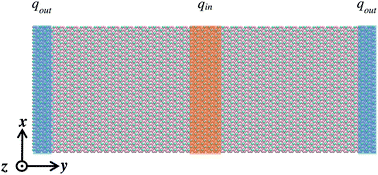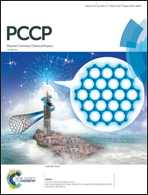Lateral and flexural phonon thermal transport in graphene and stanene bilayers
Abstract
Stanene, a low thermal conductivity two-dimensional (2D) sheet composed of group-IV element Sn, is a prototype material with novel properties such as 2D topological insulating behavior and near-room-temperature quantum Hall effects. Monolayer graphene, on the other hand, possesses unusual thermal properties, but has a zero bandgap. By stacking stanene and graphene monolayers vertically into a hetero-bilayer, an indirect bandgap can be obtained, making the hetero-bilayer a good candidate for special applications. In this work, the in-plane thermal conductivity (κ) and out-of-plane interfacial thermal resistance (R) in the hetero-bilayer are systematically investigated using non-equilibrium molecular dynamics and transient pump–probe methods. Effects of dimension, system temperature and van der Waals coupling strength on the thermal properties are examined. The predicted in-plane thermal conductivity of the graphene/stanene hetero-bilayer is 311.1 W m−1 K−1, higher than most 2D materials such as phosphorene, hexagonal boron nitride (h-BN), MoS2 and MoSe2. Phonon power spectra are recorded for graphene and stanene individually to help the explanation of their κ difference. The inter-layer thermal resistance between graphene and stanene hetero-bilayers is predicted to be 2.13 × 10−7 K m2 W−1, which is on the same order of magnitude as several other 2D bilayer structures.



 Please wait while we load your content...
Please wait while we load your content...